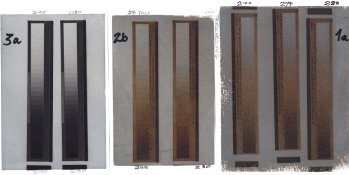Hello you bright folks & Happy NY!
I have just started with Kallitypes doing exposure tests.
I find on 2 different papers back/front that the unexposed areas turn a silver grey uniform tone and never goes/clears to white.
I mix the Fe-Ox-AgNO3 just prior to coating, developer is Sodium Acetate 2 mins. and clear with Citric Acid 5 mins. each in 2 baths. & fix.
Why does the silver grey remain please? Thanks for any clues.
I have just started with Kallitypes doing exposure tests.
I find on 2 different papers back/front that the unexposed areas turn a silver grey uniform tone and never goes/clears to white.
I mix the Fe-Ox-AgNO3 just prior to coating, developer is Sodium Acetate 2 mins. and clear with Citric Acid 5 mins. each in 2 baths. & fix.
Why does the silver grey remain please? Thanks for any clues.




